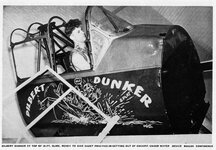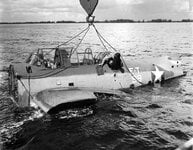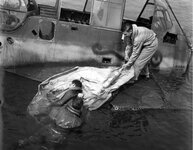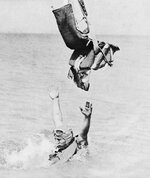Glider
Major
The only plane I flew in (as a passenger) over water was a Hunter and the Pilots notes regarding ditching might as well have said Don't do itThere is another thread here similar to this one and I posted several excerpts from Pilot's Notes which advised pilots/crews which was the safer option. Its in the back section of most Notes
Exact Words Model tests of a clean aircraft indicate that a ditching in any but ideal conditions would be very hazardous.




